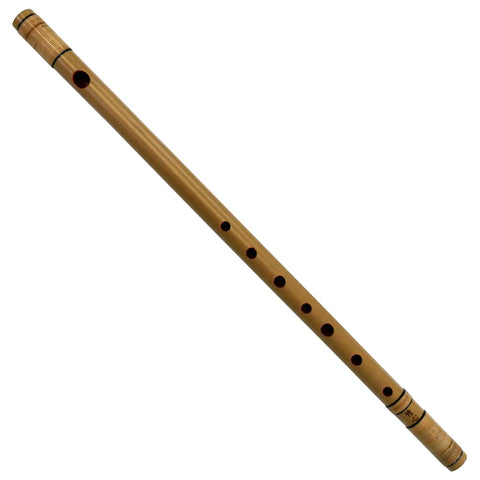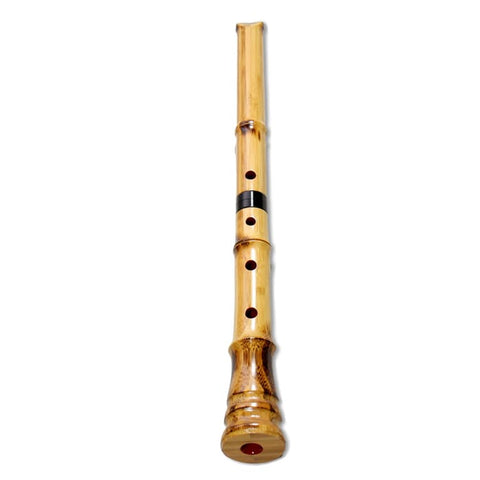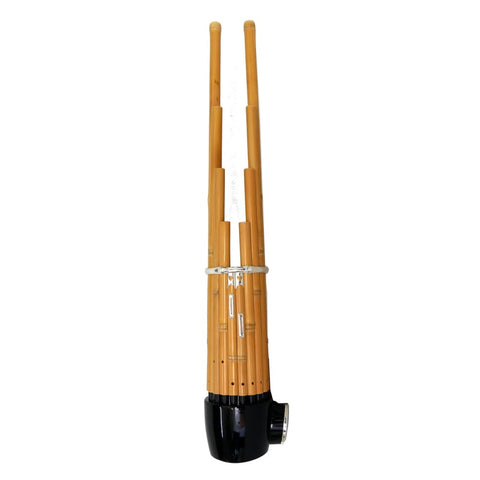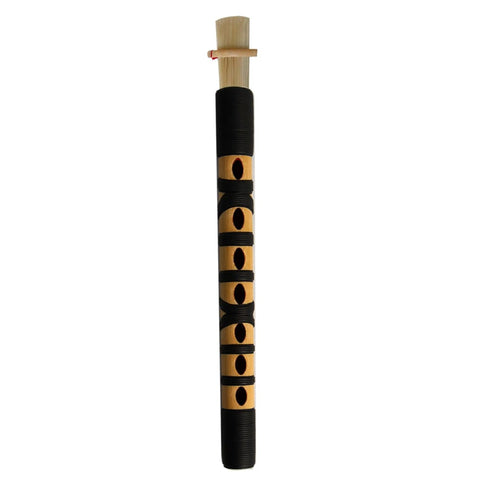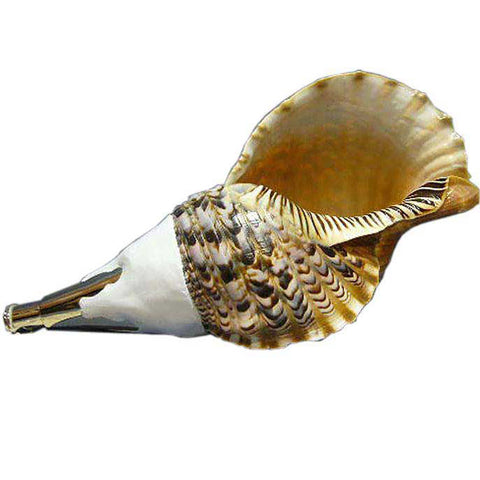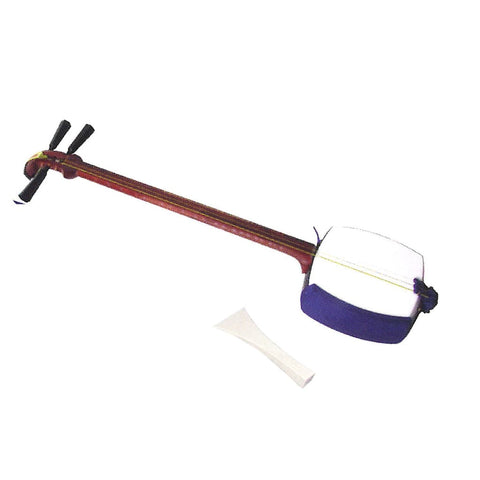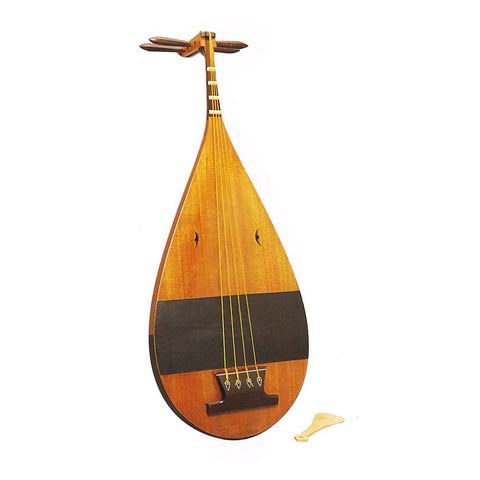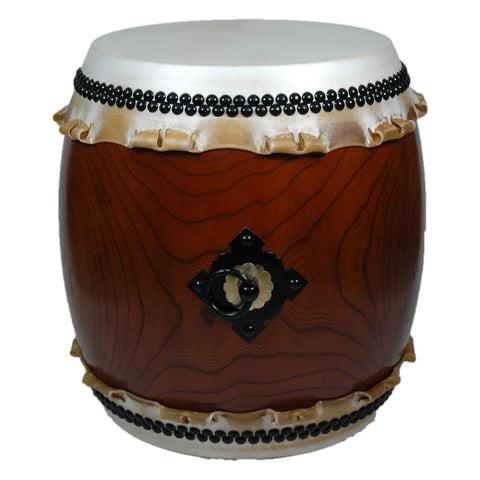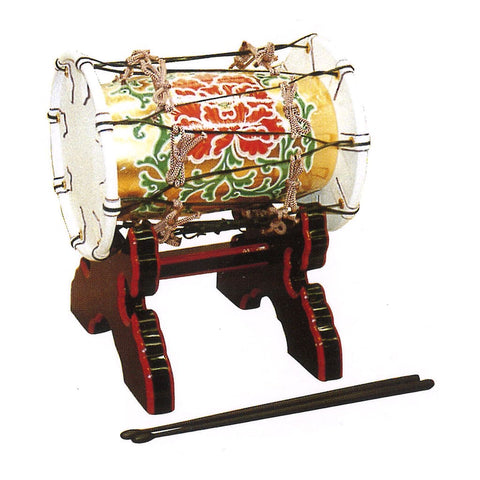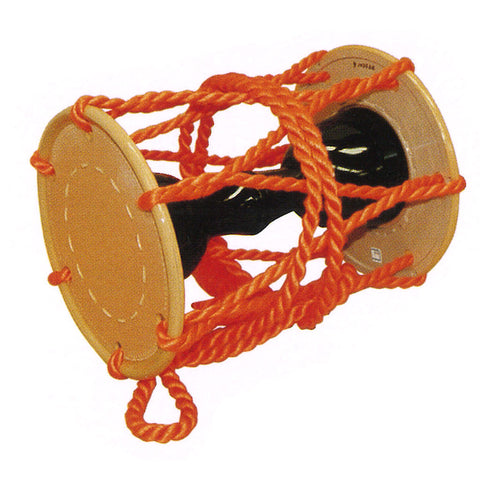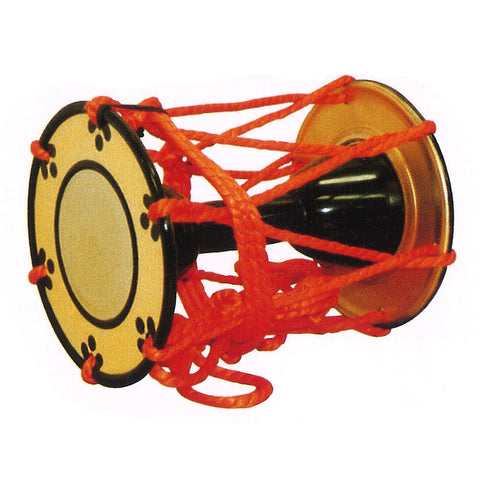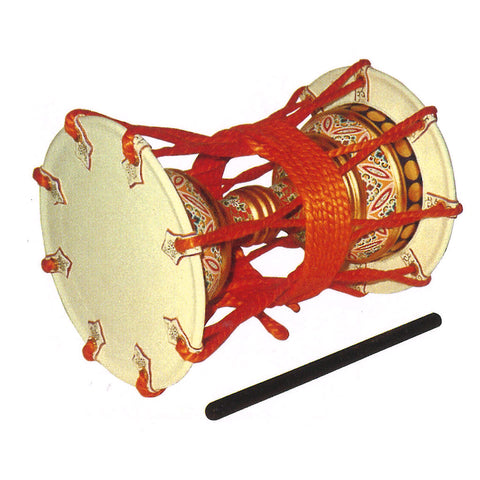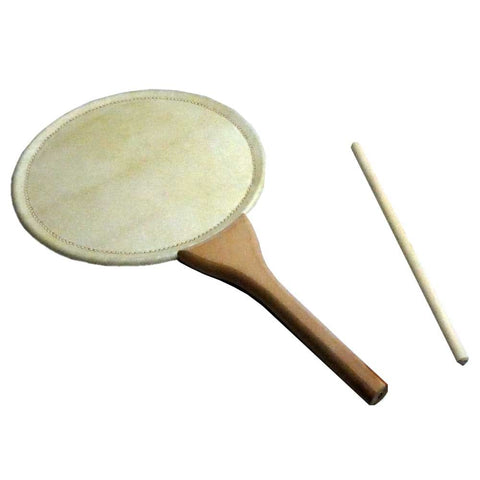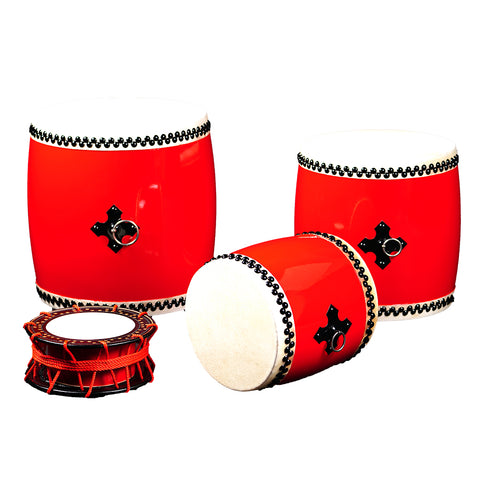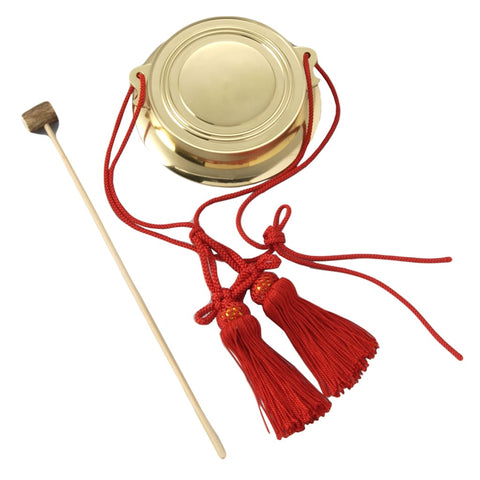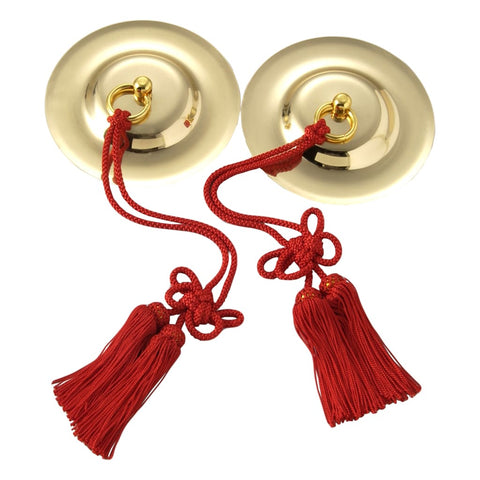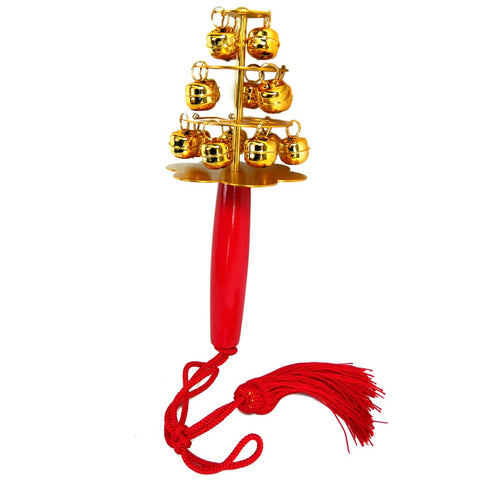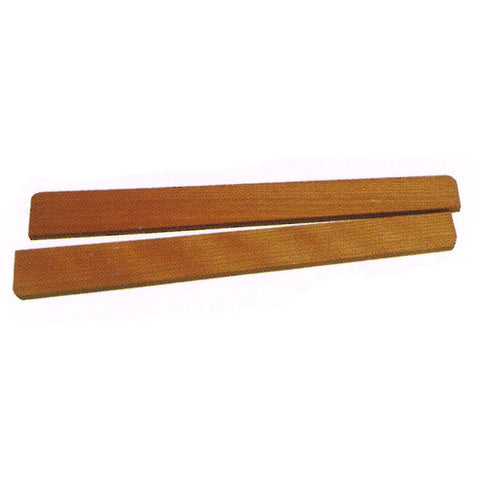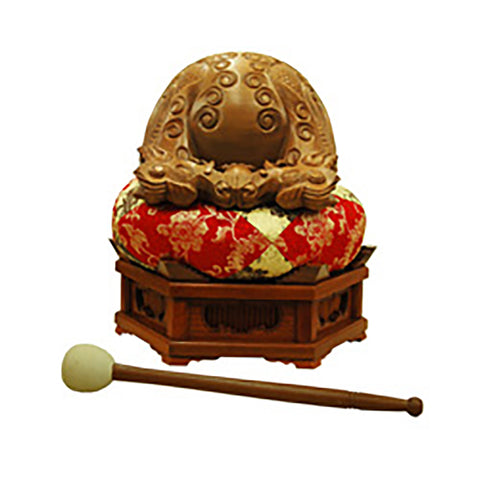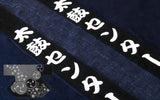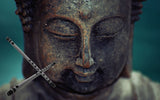Guide to 33 Types of Traditional Japanese Instruments
Here is the introduction to the traditional Japanese instruments (wagakki). You'll learn "name and type", "size, material, and structure", "sound and performance", and "context and history" for each instrument. They are developed and improved by a lot of musicians for a long time. We wish this article helps you understand Japanese instruments.
[Wind Instruments]
1. Shinobue
Shinobue is a simple transverse flute with a blow hole and fingering holes. Because it has been played by ordinary people, the origin is not clear. It's used for folk performing arts (kagura, dengaku, lion dance, and festival), kabuki theater, and geisha music. It has about 30cm (12 hon choshi) to 60cm (1 hon choshi) according to the key. It is made by thin shinodake bamboo (also known as medake). Also, rattan bindings are wound around it. There are 12 different keys of shinobue in order to adjust to the pitch of the shamisen and the vocal accompaniment. The lowest key is called 1 hon choshi (F) and the highest key is called 12 hon choshi (E). The shorter the length of the shinobue is, the higher the key is in increments of semitone. It has soft sound and play a beautiful melody with exquisite grace note. It has wide range of pitch (2~2.5 octaves). In festivals, high-pitch sound is often used.
2. Shakuhachi
Shakuhachi is popular end-blown flute made of bamboo. Blow hole is made by cutting the end part on an angle. Originally, it is said that it was introduced into Japan from continent as one of the instruments for gagaku (Japanese court music & dance). After that, it has changed the shape and name. Finally, it became current shakuhachi after fuke shakuhachi (komuso shakuhachi) which is played by monk (called komuso) of the fuke school of zen Buddhism in Edo era (1603-1868). It was used as a form of meditation and there were religious unique solo pieces. It was played by people other than komuso monk after new era (Meiji era) came and fuke school died out due to the Meiji restoration in 1871. Kinko Kurosawa (1701-1771) collected religious pieces played by komuso monk and improved the shakuhachi music. After fuke school was discontinued, the main scene of shakuhachi became sankyoku gassou (ensemble with shamisen and sou). It became Kinko school. On the other hand, Tozan Nakao (1876-1956) developed shakuhachi music by creating new piece and music notation affected by western music. It became Tozan school. It's used for sankyoku gassou (ensemble with shamisen and sou) and solo performance. Standard length is 1.8 shaku (about 54.5cm). But there are wide range of the length from 1.1 shaku (about 33cm) to longer than 2 shaku (about 60cm). It is made of bamboo. The sound produced changes depending on the length and tuning. Usually, it has wide sounds from low-pitch to high-pitch with harmonic sound.
| Main School | Shape of Blow Hole Edge | Notation |
| Kinko | Plectrum | Ro / Tsu / Re / Chi / Ri |
| Tozan | Crescent Moon | Ro / Tsu / Re / Chi / Ha |
3. Ryuteki / Komabue / Kagurabue
Ryuteki is one the traditional Japanese transverse flutes. It is said that it was introduced into Japan from continent. It's used for gagaku (Japanese court music and dance. especially, tougaku, saibara, kumeuta, and yamatouta) and festivals. It has about 40cm in length. It's made of bamboo called medake. Urushi lacquer is painted inside of it. Kaba (thin wire-like bark of cherry blossom) is wound around it. Lead is put into the end of the flute. So, it has slight weight. The sound produced is strong and loud. The sounds range is about 2 octaves. Compared to hichiriki, melody instrument in gagaku as well as ryuteki, it makes sounds with exquisite grace note.
Komabue is used for gagaku as well as ryuteki. Unlike ryuteki, it's played in komagaku and azumaasobi. It is thinner and shorter than ryuteki. It is a whole tone higher in pitch than the ryuteki. It produces sharp and clear sound.
Kagurabue is used for gagaku as well as ryuteki and komabue. Unlike them, it's played in kagurauta. It's also called yamatobue. It is longer and thinner than ryuteki. It is a whole tone lower in pitch than the ryuteki. It's played elegantly with gentle breath. It's said that the most expensive flute in these three flutes.
4. Sho (Hosho)
Sho is a free reed instrument made of bamboo pipes and body. It is said that it was introduced into Japan from continent just before Nara period (710-794) or in Nara period. Free reed called shita is attach on the lower part of bamboo. So it becomes hard to make sound if shita is wet by breath, it need to be dried before performance. It's used for gagaku (Japanese court music and dance). It has about 50cm in length. It's made of 17 thin bamboo pipes that attached on the body. Usually, it plays chords with 5-6 sounds called aitake.
5. Hichiriki
Hichiriki is a double reed instrument made of bamboo body and reed. It is said that it was introduced into Japan from tang dynasty of china in the early 7c as one of the instruments of gagaku (Japanese court music and dance). It needs to put the reed into the warm tea before attaching the body in order to open blow hole. It's used for gagaku. It has about 18cm in length and the reed is about 6cm. It's made of bamboo and kaba (thin wire-like bark of cherry blossom) is wound around it. Urushi lacquer is painted inside. Sound range is 1 octave. It produces loud sounds that you cannot be expected. It uses a playing technique called enbai (a kind of portamento) and changes it by breath and depth of the reed in the mouth.
6. Nohkan
Nohkan is one of the transverse flutes in Japan. It's used for nohgaku (noh play and kyogen farce), kabuki theater, nagauta, and festivals. It has about 39cm in length. It's made of bamboo called medake. Especially, it is said that susudake, a bamboo on the ceiling smoked by fireplace in the old Japanese house is excellent. A short bamboo pipe called nodo is put inside of it between the blow hole and the nearest fingering hole. It's made to produce high-pitch sound called hishigi easily because the nodo part gets in the way of breath. It's played to the rhythm of the tsuzumi (percussion instrument) and freely (ashirai).
7. Horagai
Horagai is a shell-conch flute of Japan. The origin is not clear but it's said that priest brought back to Japan from tang dynasty of China. It's often used by shugenja, practitioner of the Japanese religion of the shugendo for chanting and sending signals. Or, it's played as communication tool in middle ages. It has about 20cm to about 50cm in length. It's made by cutting the edge of the large conch shell and attaching a mouthpiece on it. The sound is produced by trembling lips and shaking inside of the shell.
[String Instruments]
8. Shamisen
Shamisen is a popular Japanese three-stringed lute. Although it's a string instrument, sometimes it's played like percussion by hitting the skin with a plectrum. The history of shamisen is relatively shorter than other Japanese instruments but the sounds are extremely improved by many old players from various genres for a long time. The origin of the shamisen is sanxian of China. It is said that sanxian was introduced from China to Okinawa and it became sanshin. Sanshin was introduced from Okinawa into Sakai of Osaka, Japan In Eiroku era (1558-1570) and it became shamisen. Shamisen is developed by biwa hoshi, Japanese lute priests to change the size, skin, shape of bachi, and sawari part. There are many types of shamisen used in various scenes. It's used for kabuki theater, ningyo joruri puppet show, geisha music, and folk song. It has about 97cm in length but the size changes depending on the type. There are 3 main types classified according to the size: futo-zao (thick neck), chu-zao (middle neck), and hoso-zao (thin neck). Furthermore, there are more variations with different thickness of string and skin, weight of bridge, and plectrum. Body is made of karin (Chinese quince), kuwa (mulberry), shitan (rosewood), and kouki (redwood). Neck is made of kouki (redwood), kokutan (ebony), and shitan (rosewood). The sound produced changes depending on the types of shamisen. Shamisen is often played with a vocal accompaniment. Singing method differs depending on the genre of music and the best shamisen to the vocal accompaniment is selected. So, some makes light sound and others make strong sound.
| Types of Shamisen | Genre |
| Futo-zao (Thick Neck) | Tsugaru / Gidayu |
| Chu-zao (Middle Neck) | Jiuta / Tokiwazu / Kiyomoto / Shinnai |
| Hoso-zao (Thin Neck) | Nagauta / Kouta / Hauta |
9. Sou (Koto)
Koto is a general term of the Japanese string instruments and nowadays it means sou, a Japanese zither. It is said that it was introduced into Japan from tang dynasty of China. It was 13 strings type of zither. It was played in gagaku (Japanese court music) and people of todo (a guild for blind men) prevented the technique of the instrument. Kengyo Yatsuhashi (1614-1685) started modern sou music and it's called zokusou. It became zokusou played today. Kengyo Ikuta (1656-1715) affiliated jiuta of shamisen music and it became Ikuta school. Later, Kengyo Yamada (1757-1817) play the uta joururi music popular in Edo (old Tokyo) and started Yamada school. Gakuso, a type of sou is used for gagaku (Japanese court music) and zokuso is used for sankyoku gassou (ensemble with shamisen and shakuhachi). Wagon is Japanese original zither and called yamatogoto. Gakusou has about 190cm in length and zokusou has about 180cm in length. The body is made of paulownia. The bridge of gakusou is made of wood like shitan (rosewood) and kokutan (ebony). The bridge of zokusou is made of ivory and plastic. The player puts a plectrum on the thumb, index, and middle finger of the right hand and plucks the strings. The pitch of the each string is tuned by moving position of the bridge.
| School of Sou (Zokusou) | Feature |
| Ikuta | Square Plectrum |
| Yamada | Round Plectrum |
10. Biwa
Biwa is one of the Japanese lutes. the origin is western Asia. It is said that barbat, a Persian lute went to east and became pipa (China) and biwa (Japan). On the other hand, oud, a Arabian lute went to west and became lute (Europe). It is said that biwa was introduced into Japan from continent as one of the instrument of gagaku (Japanese court music) in 7c to 8c. Biwa used in gagaku is called gaku biwa. Latter, other types of biwa like heike biwa, mousou biwa, modern biwa (satsuma biwa and chikuzen biwa) were developed. It was played by biwa hoshi (blind Japanese lute priests) by the middle of Heian period (794-1185). From Kamakura period to Muromachi period (1336-1573), it was played by biwa hoshi as a background music of the most popular storytelling, "The Tale of The Heike". The popularity of the biwa replaced with shamisen in 16c but it was improved by blind monk in Kyusyu district and it became modern biwa later. Gaku biwa is used for gagaku (Japanese court music). Mousou biwa and heike biwa are religious use. Modern biwa is used for artistic activity. The size varies according to the types. Gaku biwa has about 100cm, mousou biwa has about 75cm, and heike biwa, satsuma biwa, chikuzen biwa has about 80 to 90cm in length. Material of wood varies according to the types. Gaku biwa and heike biwa are made of shitan (rosewood), kokutan (ebony), and karin (Chinese quince). Chikuzen biwa is made of sakura (cherry), karin (Chinese quince), and kuwa (mulberry). Front body of chikuzen biwa is made of soft wood, kiri (paulownia). On the other hand, front body of satsuma biwa is made of hard wood, kuwa (mullberry). It is due to the difference of the playing technique. Gakubiwa is set horizontally. The player holds the neck with left hand and plucks 4 strings with plectrum. Heike biwa was played while the player reads sutras and tells stories. Mousou biwa was played by blind monk in Kyusyu district and developed biwa and played shamisen music. Chikuzen biwa is made of kiri (paulownia) and makes softer sound than satsuma biwa. Satuma biwa is made of kuwa (mullbery) and the plectrum is very big and has Japanese fan-shape (ougi-gata). It's often played with tremolo and hitting the front body strongly.
| Types of Biwa | Feature |
| Gaku Biwa | 4 Strings 4 Frets |
| Heike Biwa | 4 Strings 5 Frets |
| Mousou Biwa | Origin of Chikuzen Biwa and Satsuma Biwa |
| Chikuzen Biwa | 5 Strings 5 Frets |
| Satsuma Biwa | 4 Strings 4 Frets |
11. Sanshin
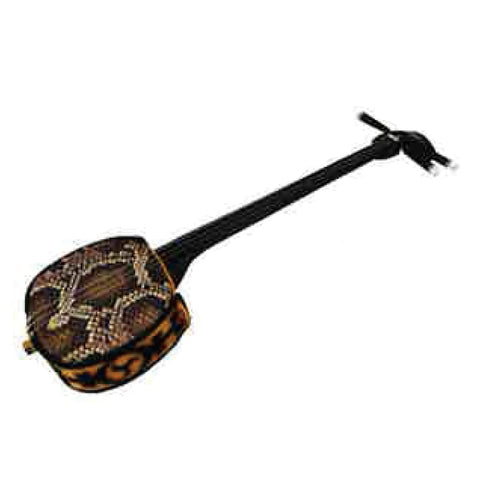
Sanshin is a lute in Okinawa, Japan. It is said that sanxian was introduced from China in the end of 14c and it became sanshin in Okinawa later. It's used for traditional music of Okinawa and Amami district. It's often played as back ground music for the folk song in Okinawa. It has about 80cm in length. The skin is made of python. The player puts a plectrum made of cow's horn and plastic on the index finger of the right hand and plucks the strings.
12. Kokyu
Kokyu is an only string instrument played with bow. There are some theories of the origin. First, it is the instrument that shamisen is developed. Second, it is the instrument that kokyu in Okinawa is developed. Third, it is the instrument that rebec of Portuguese is developed. In either case, it was played in early Edo period. It was played with sou and shamisen in sankyoku gassou (ensemble of three instruments) but it was replaced with shakuhachi. Nowadays, it's played in folk performing arts like Owara kaze no bon and Gokayama mugiyabushi as a back ground music. It has about 69cm in length: a little shorter than shamisen. Material is almost same with shamisen. It is a only bowed string instrument in Japan. The player set it between both knees and play it with bows. It produces a little sad sounds.
[Percussion Instruments]
13. Taiko (Byo Uchi Daiko)
A word "taiko" is a general term for drums that have a skin stretched over the body in Japanese (except for tsuzumi). It is said that it's been used in Japan for a long time from ancient times. For example, haniwa clay image holding a barrel shape drum tightened by rope (6-7c) was excavated in Gunma, Japan. Byo uchi daiko is a general name for drums tightened by tack and it is thought that it appeared since the technique of tack was developed. It is used for festivals, folk performing arts, kagura, and other performing arts. Nagado daiko is a name of barrel-shaped taiko tightened by tacks and also known as miya daiko. When it comes to wadaiko (literally means Japanese drums), most of Japanese people reminds of this drum. Hirado daiko is a nailed drum with short body and used for folk performing arts and Buddhist temples by hanging from the frame. It depends on the types but it has about 30cm to 100cm in length. For material of nagado daiko, a wood called keyaki (Japanese zelkova) is excellent and cowhide is used for the head of drums. It is played with sticks called bachi. There are various playing styles depending on how to set on the stand. Player hits one or both head(s) of drums with sticks and sometimes, changes the sound by hitting wood part and iron part.
14. Taiko (Shime Daiko)
Shime daiko is a general name for drums tightened by rope or other tools. It's used for festivals, folk performing arts, kabuki theater, noh play. It has about 30cm in length. It is made by stretching cowhide or horsehide over wooden body and tightened by rope. It is played with sticks called bachi. In nohgaku (music for noh play), the player sets it on the stand and plays while staying in kneeling position. Tsuke-shime daiko is another type of shime daiko with thicker skin produces louder and higher-pitch sound. It is often used for modern taiko performance. Both types of drums can be tuned by changing tension of the skin with rope. Brand-new skin doesn't make sound well and the player needs to play it again and again in order to get best sound.
View Tsuke-shime Daiko for Sale
15. Gaku Daiko

Gaku daiko is one of the drums used in gagaku (Japanese court music and dance). The origin is not clear but it is considered that it was introduced from the continent. It has about 55cm in diameter. It has wooden body and nailed skin on the body. It is hung from the frame. The player hits only one side of drum head with sticks while sitting in front of the drum. Stick on the left hand is called mebachi (female stick) and one of the right hand is called obachi (male stick). The player hits the lower left part of the skin a bit strongly with mebachi and it's called zun. On the other hand, the player hits the center of the skin strongly with obachi and it's called dou. There are some rhythm patterns made of these playing styles.
16. Dadaiko (Kaen Daiko)
Dadaiko is one of the drums used in gagaku (Japanese court music and dance). The origin is not clear but it might be developed in Japan after reformation of gagaku. It has flame-shape ornament around the drum and kaen daiko is named after it (kaen means flame in Japanese). It has about 130cm in diameter. It is made by stretching cowhide over the body and tightening by rope. The player hits only one side of head with sticks on the both hands while standing in front of the drum.
17. Kakko
Kakko is one of the drums used in gagaku (Japanese court music). It is said that it was introduced into Japan from China in Nara period. It has about 30cm in length. Body is made of kashi (oak) and sakura (cherry blossom). It is made by stretching skin over the cylindrical body with rope. Setting on the stand, it is played with sticks on both hands. The player decides the tempo, sends signals for enter and exit of the stage. There are three basic playing styles: "sei", "katarai", and "mororai". To play sei, the player hits a right side of the skin with right stick. To play katarai, the player hits one side of the skin slowly first and gradually faster. To play mororai, the player hits both sides of skin with sticks on both hands one after another.
18. Tsuzumi (Otsuzumi)
Originally, tsuzumi was a general term for drums in Japanese. Nowadays, hourglass-shaped hand drums are called tsuzumi. It was originally introduced as one of the instruments for gagaku (Japanese court music and dance). From drums called ikko, niko, sanko, shiko, it is said that niko was played by miko (shrine maiden) in Heian period. It is said that it was introduced into noh play through kusemai dance and became otsuzumi after it was used by shirabyoshi (female dancers). It is used for noh play, kabuki theater, folk performing arts. It has about 30cm in length. Body is made of quality cherry wood and skin is horsehide. The player holds the rope by left hand and hits one side of the head by right hand while setting on the left knee. Before assembling it, the player roasts the skin and makes it dry and tension. The sound becomes higher than usual by roasting the skin.
19. Tsuzumi (Kotsuzumi)
From drums called ikko, niko, sanko, shiko introduced as instruments for gagaku (Japanese court music), it is said that ikko became kotsuzumi. Kotsuzumi is a small hand drum used for noh play, kabuki theater, and folk performing arts. It is a little smaller than otsuzumi and has about 26cm in length. It has an hourglass-shaped body made of wood. Skin is horsehide and it is assembled with rope. Holding rope by left hand and setting on the right shoulder, the player hits one side of the skin with right hand. Changing rope tension by power of grip, the pitch and tone can be changed.
20. Sannotsuzumi
It is said that sannotsuzumi was introduced from China and Korean peninsular in Nara period. It is used for gagaku (komagaku). It is a little bigger than kakko and has about 45cm in length. It is made by stretching skin over hourglass-shaped body and assembled with rope. Setting on the stand or ground, it's played with stick on the right hand while holding rope with left hand. The player has an important role and decides the tempo and sends signals.
21. Uchiwa Daiko
Uchiwa daiko is a drum made by stretching a skin over a round frame and attach a handle on it. It's used for kabuki theater folk performing arts, Nichiren Buddhism. It has wide range of the size and is usually about 20 - about 45cm in diameter of head. The player hold it by one hand and hits by another hand with stick. For Nichiren Buddhism, the monk hit the drum while chanting "nam myoho renge kyo".
22. Drums of Okinawa (Eisa Taiko)
Okinawa is the southernmost prefecture of Japan, which consists of many islands and has unique culture. Eisa is a folk dance that performed by people in Okinawa to honor the spirits of their ancestors. It is said that the original performing arts in Okinawa became eisa dance after Buddhism song and dance were introduced from Japan mainland into Okinawa. Three drums are used for eisa dance. The biggest one is odaiko, the middle one is shime daiko, and the smallest one is paranku. These drums has wooden body and cowhide nailed on the body. It looks like taiko drums in Japan mainland but the wood is relatively light and soft. Odaiko is hung from player's shoulder with sash and played with a stick. Shime daiko and paranku are held by one hand and played with a stick on another hand.
23. Kane (Atarigane / Surigane / Souban / Yosuke / Chanchiki)
Kane is a general term for percussion instruments made of metal. So, gong is called kane in Japanese. Japanese gong is used for festivals, folk performing arts, and kabuki theater. It has about 15cm to 30cm in diameter. It is made of metal. The player hangs it with a string from left hand and hits the center of it with a beater on right hand, or holds in on his / her palm and scratch inside of it. There are some technical terms for it according to the size and purpose. Technically, gong hung from handle (like string) is called "atarigane" and gong held on palm of player is called "surigane". "Souban" is large atarigane and "yosuke" is small surigane with thinner body. In local festivals, it sometimes called "chanchiki".
24. Shouko
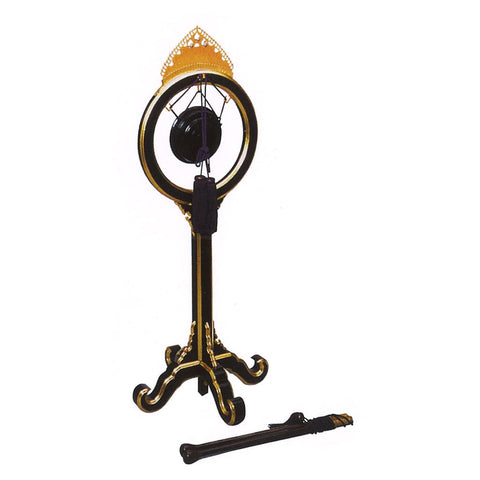
Shouko is a gong used for gagaku (Japanese court music and dance). It is hung from the frame stand and has about 15cm in diameter. The stand looks like a gaku daiko's stand. The player hits the inside of the gong with sticks on both hands while sitting in front of the gong. If the player hits it with both sticks at the same time, a left stick should hit a little faster than a right stick.
Dai Shouko is large shouko and has about 24cm in diameter. the ornament of the stand looks like a dadaiko's stand.
25. Dora
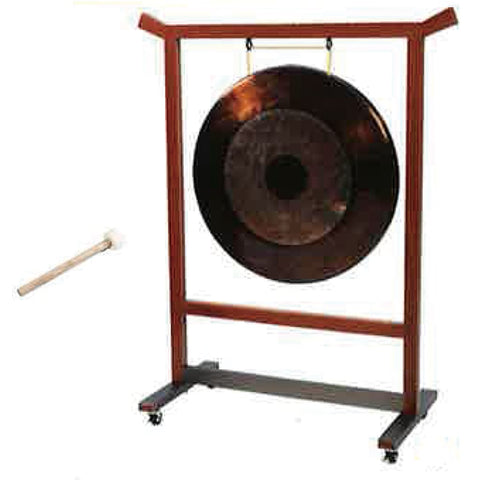
Dora is a large and thin gong made of bronze. It is originated from Chinese percussion called ra. It is used for Buddhism music, kabuki theater, and folk performing arts. It has wide range of the size from about 30cm in diameter. It is hung from the frame and the player hits it with a stick.
26. Kane (Doubatsu / Doubyoshi / Tebiragane / Chappa)
Kane is a general term for percussion instruments made of metal. So, cymbal is called kane in Japanese. Japanese cymbal is used in temples, folk performing arts, kabuki theater, and kagura. It is said that it was already introduced into Japan in Nara period. It is made of metal and has wide range of the size. The player scratches each part on both hands and changes the sound by accent. Or, the player hits the both part together and keep them touch slightly each other to make a reverberation. There are some technical terms for it according to the size and purpose. Small cymbal used in folk performing arts is often called "tebiragane". Large cymbal used for a festival in Kyusyu district is called "jangara". Cymbal used in local festivals and kabuki theater is often called "chappa". "Doubatsu" and "doubyoshi" is another name for it.
27. Kagura Suzu
Kagura suzu is a Japanese hand bell used for kagura dance performed by local people and miko (shrine maiden). It has about 30cm in length. Kagura suzu that has 7 bells at lower part, 5 bells at middle, and 3 bells at upper part is especially called shichigosan no suzu. In miko kagura (kagura dance performed by shrine maiden), miko holds it on her right hand and shake bells over her head.
28. Bonsho
Bonsho is a giant bronze bell used in Buddhism temples. It is struck to announce the time and send signals. It has wide range of the size and usually about 1-2 meters in length. Usually, it is hung from the bell tower and struck by a large beater. It produces deep and low sound with long reverberation.
29. Shakubyoshi
Shakubyoshi is a wooden percussion made of two titual baton called shaku. It has so long history that it is described in "The Tale of Genji" written by Murasaki Shikibu. It has about 25cm in length and about 3cm in width. Shakubyoshi consist of a pair of baton. The player holds the lower end of them and make a sound by striking them each other.
30. Mokugyo
Mokugyo is a wooden percussion shaped like fish, which is often used in Buddhism temple. It is said that it was introduced from China into Japan after middle ages. It has about 6cm to 31cm. It's played in time with the rhythm when Buddhist chants a sutra.
31. Yotsudake
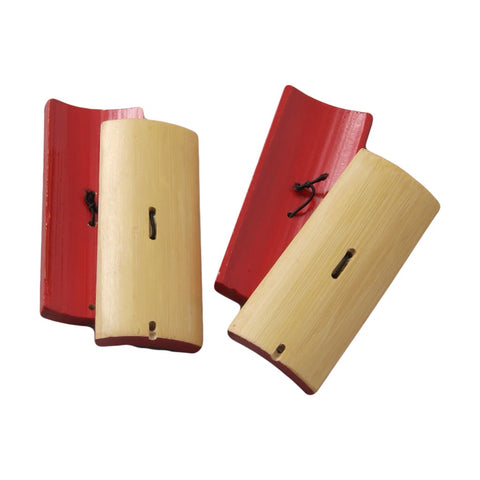
Yotsudake is a percussion made of bamboo and has about 10cm in length. It is played for folk performing arts, kabuki theater, court dance in Okinawa. The dancer holds two bamboo plate on each hand and makes a sound by hitting them each other.
32. Sasara
Sasara is a percussion made of bamboo (or, wood) and has about 30cm in length. It is played for folk performing arts and dengaku dance. There are two types: surizasara and binzasara. As name suggested, surizasara is played by scratching bamboo. The player holds a split bamboo stick that looks like brush (called sasaradake) on right hand and thin stick with saw-toothed part on left hand. Binzasara is made by string wooden plate with a handle attached at each end. The player makes a sound by bending it.
33. Hyoshigi
Hyoshigi is a wooden percussion used for kabuki theater, ningyo joruri puppet show, sumo battle, and a daily life. It consists of a pair of sticks and has about 25cm in length. The player holds a stick in each hand and claps them each other.
Related Articles
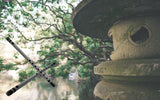 |
Do you know types of shinobue? See also this article. Types of Shinobue |
 |
Let's see what kind of taiko are there. Types of Taiko |
😚Thank you for reading this to the end. Please feel free to ask any questions or leave any comments😉


